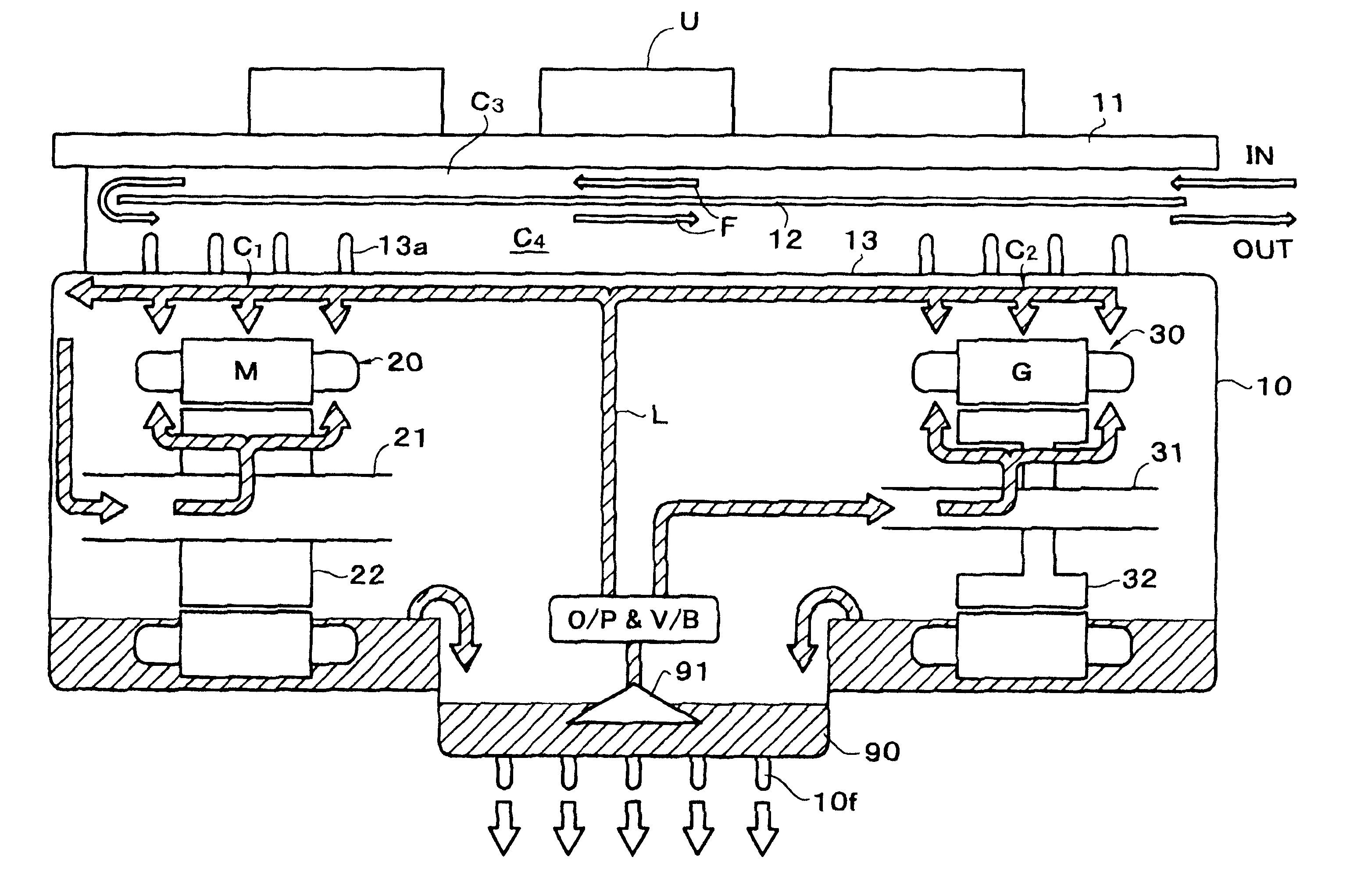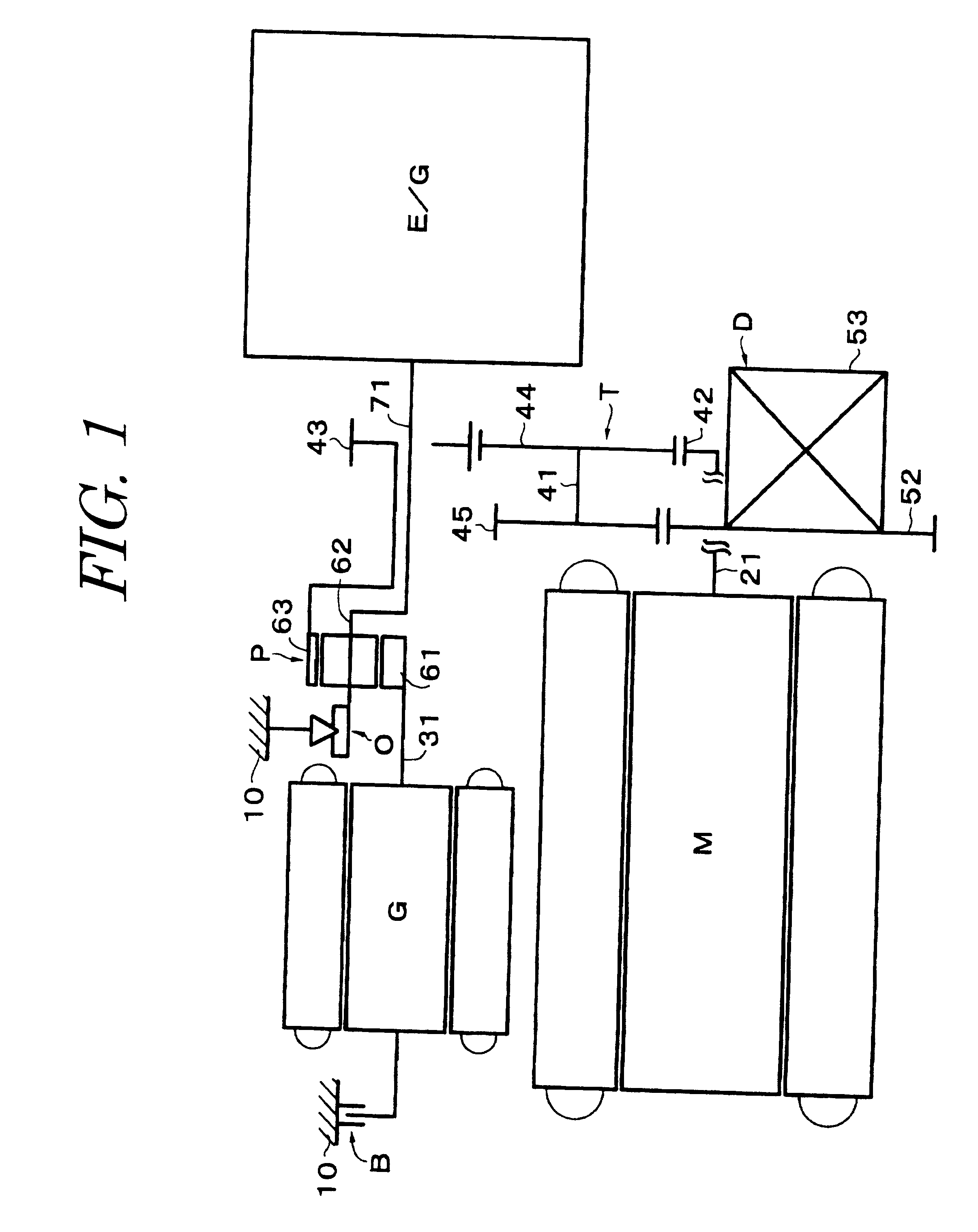Drive unit with coolant flow through a space separating an inverter from a casing housing an electric motor
- Summary
- Abstract
- Description
- Claims
- Application Information
AI Technical Summary
Benefits of technology
Problems solved by technology
Method used
Image
Examples
first embodiment
Thus, described above, because the flow passages for coolant between the motor M and the inverter U are stacked as two layers, one on the motor M side and the other on the inverter U side, the cooling water which flows therethrough acts as two heat insulating layers, and it becomes possible to block the heat on the motor M side, which becomes hotter than the inverter U side, by absorbing it in two steps with the cooling water in the flow passage so that it becomes difficult for the heat from the motor to be transferred to the inverter U. As a result, it is possible to prevent the temperature of the inverter U from rising due to the integration of the motor M and the inverter U. Furthermore, as the isolating means 12 (a heat insulator) is disposed on the inverter panel 11, it resists heat transfer to the cooling water which flows through the first chamber C.sub.3 on the inverter U side.
Furthermore, because the sequence is such that the cooling water first cools the power module form...
second embodiment
With this second embodiment, because the cooling water flows through the first chamber C.sub.3 and the second chamber C.sub.4 are independent, the heat of the motor M is prevented from being transferred to the inverter U through the cooling water. Moreover, since it is possible to run the cooling water at a lower temperature to the second chamber C.sub.4 side facing the heat transfer wall 13 portion, the cooling efficiency of the motor M and the generator G can be further improved.
Next, FIG. 11 shows a third embodiment wherein the flow of cooling water the first and second chambers C.sub.3 and C.sub.4 are the reverse of the flow pattern of the first embodiment (FIG. 5). In this embodiment, the cooling water as the second coolant first flows through the second chamber C.sub.4 to cool the oil through the heat transfer wall portion 13. Then it flows through the first chamber C.sub.3 to cool the power module of the inverter U.
third embodiment
In this third embodiment the cooling water (second coolant) does not directly cool the motor M and the generator G but, rather, cools the oil which, in turn, circulates around the motor and generator, and cools them. Therefore, the heat from the motor M and the generator G is reduced by heat exchange with the cooling water through the oil, as opposed to direct heat transfer, whereby an advantage is gained in that it is possible to prevent the temperature of the cooling water from rising above the maximum which can be tolerated by the inverter U.
FIG. 12 shows a fourth embodiment wherein the structures of the members defining the water flow passage have been modified relative to corresponding structures of the first and second embodiments. In this fourth embodiment, an independent surrounding wall member 14 is interposed between the drive unit case 10 and the inverter panel wall 11, and further, an independent isolating means 12 is interposed between the inverter panel 11 and the case...
PUM
 Login to View More
Login to View More Abstract
Description
Claims
Application Information
 Login to View More
Login to View More - R&D
- Intellectual Property
- Life Sciences
- Materials
- Tech Scout
- Unparalleled Data Quality
- Higher Quality Content
- 60% Fewer Hallucinations
Browse by: Latest US Patents, China's latest patents, Technical Efficacy Thesaurus, Application Domain, Technology Topic, Popular Technical Reports.
© 2025 PatSnap. All rights reserved.Legal|Privacy policy|Modern Slavery Act Transparency Statement|Sitemap|About US| Contact US: help@patsnap.com



